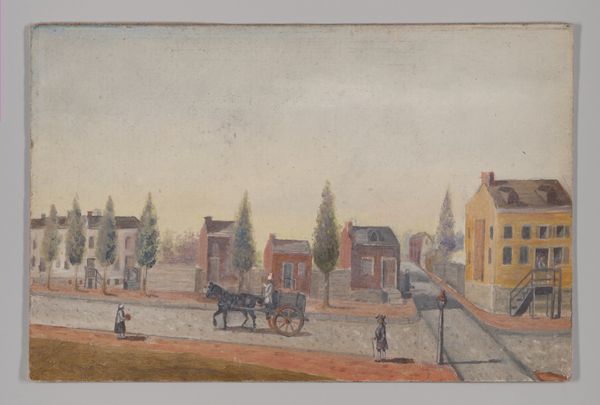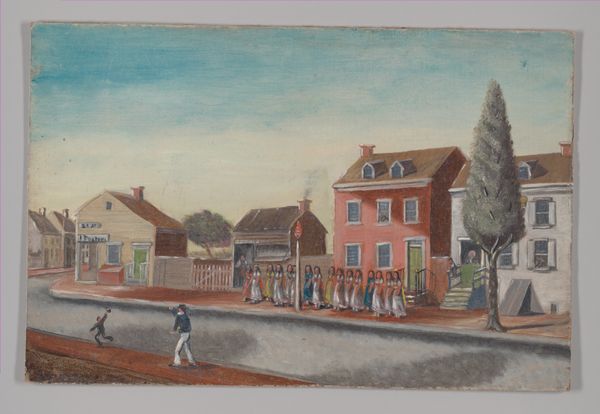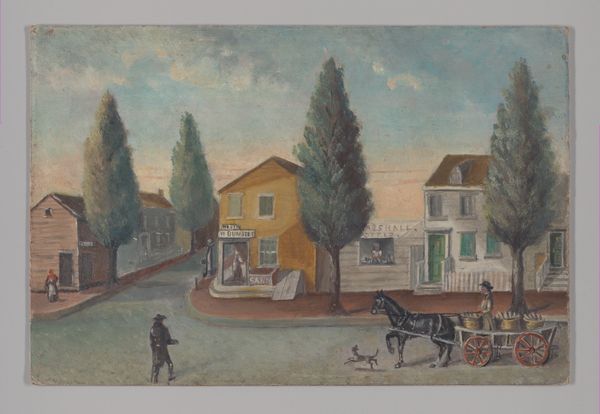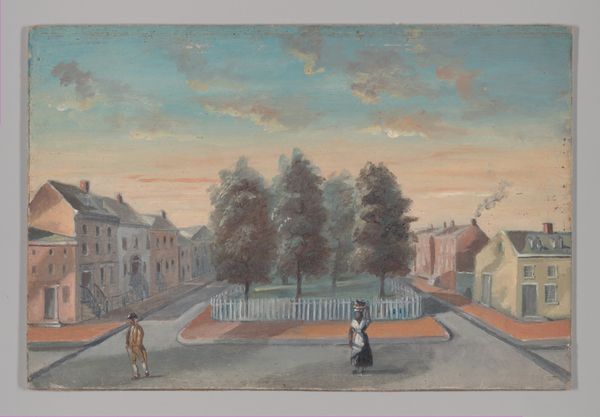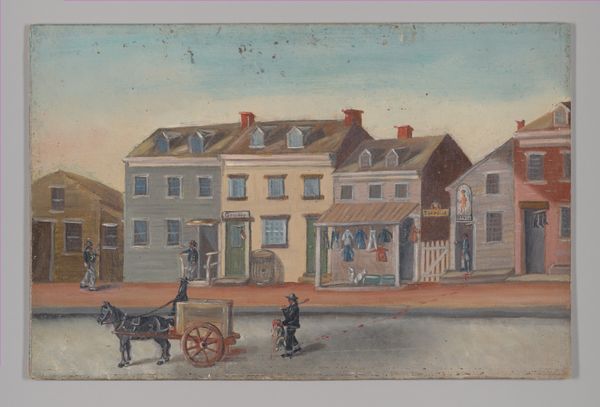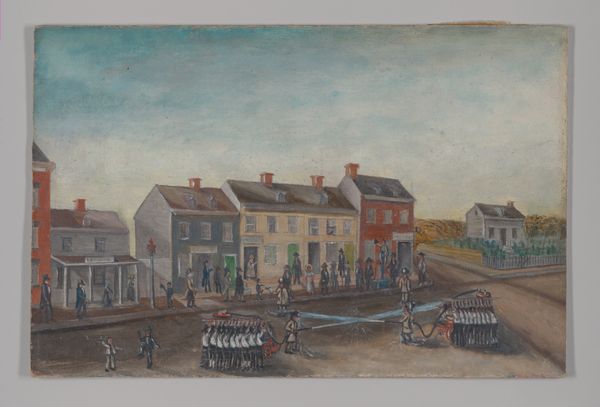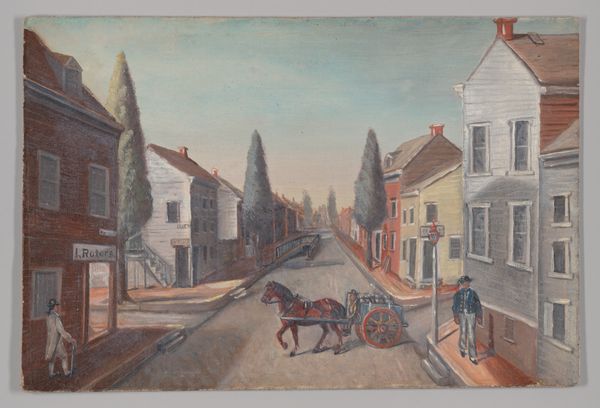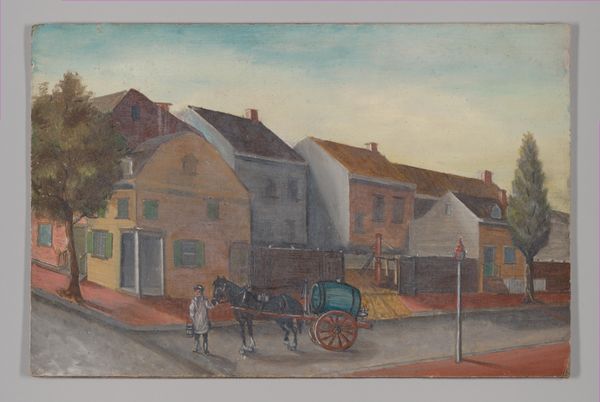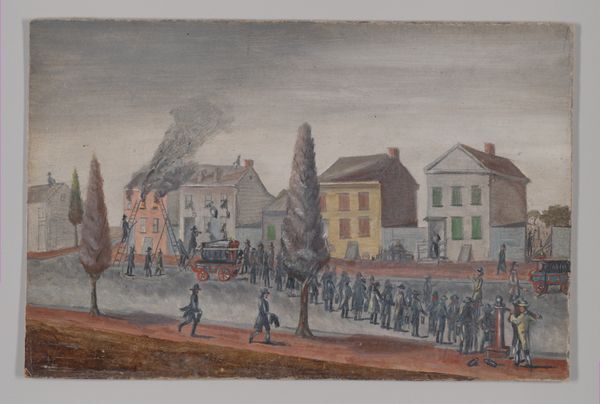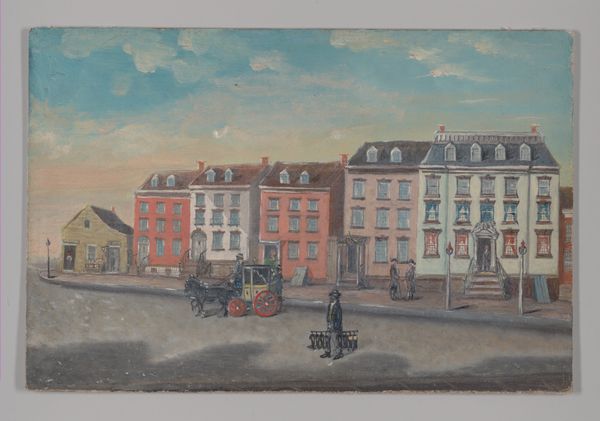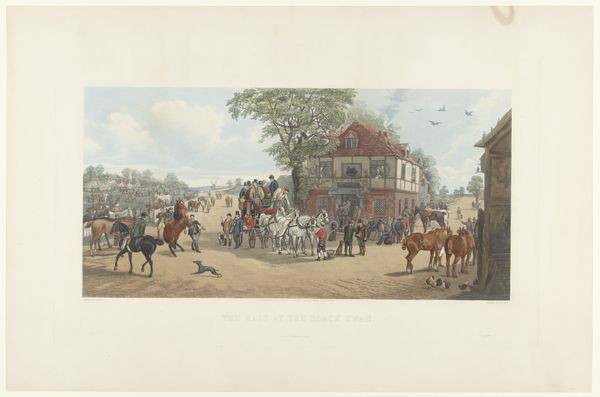
painting, watercolor
#
painting
#
landscape
#
watercolor
#
coloured pencil
#
horse
#
men
#
cityscape
#
genre-painting
#
watercolor
#
realism
#
building
Dimensions: 6 7/16 x 9 1/8 in. (16.4 x 23.2 cm)
Copyright: Public Domain
Curator: The artwork before us is William P. Chappel’s “Bull’s Head Tavern,” a watercolor cityscape he made around 1870. Editor: It strikes me as curiously muted. A bit subdued for a tavern scene. I expected a bit more verve, more punch in the color palette. Curator: Notice how Chappel delineates the figures and architectural elements with remarkable precision using watercolour. Consider the interplay of soft hues—how the blending suggests an atmosphere of subtle realism and reflects an emerging style within American painting in the later 19th Century. Editor: But what is happening here? Is it some sort of official procession? Soldiers, or at least men on horseback wearing what look like military hats, alongside a work animal, people in white garments - who are those? What are they doing? Is this tavern an important site? And what’s that flag atop the building? It’s these representational choices which provide context. Curator: Agreed, the details here invite speculation. See how the figures are rendered somewhat generically—stylized, but ultimately readable, avoiding any kind of sharp angularity in the forms. This approach contributes to the painting's dream-like sensibility. The tension between representation and abstraction invites interpretation. Editor: Exactly, and historically speaking, that tension reflects anxieties of post Civil-War society grappling with ideas of nationhood and its fractured past and potentially fractured future, too. This sort of tavern or pub played an essential role, you see, as an informal gathering place in any community – but who has access to such places, at what cost? Chappel gives us access but not the answers, a deliberate move I'd say. Curator: I can certainly see how you would arrive at such historical implications from the work; and certainly there is evidence. However I read instead the subtleties in form and color relationships. It’s that careful balancing act between realistic and stylized treatment of the medium I think the artist uses to communicate deeper aesthetic ambitions of balance and order. Editor: Well, I see more than a pleasing watercolor: this artwork is a portal offering insight into the period it comes from! An artist and documentarian together. Curator: Interesting how those separate observations provide complementary avenues for analysis for any thoughtful person in encountering a complex painting. Editor: Yes, and understanding it within our own complex and ever changing cultural conditions allows further layers to its historical resonance to shine more fully.
Comments
No comments
Be the first to comment and join the conversation on the ultimate creative platform.
